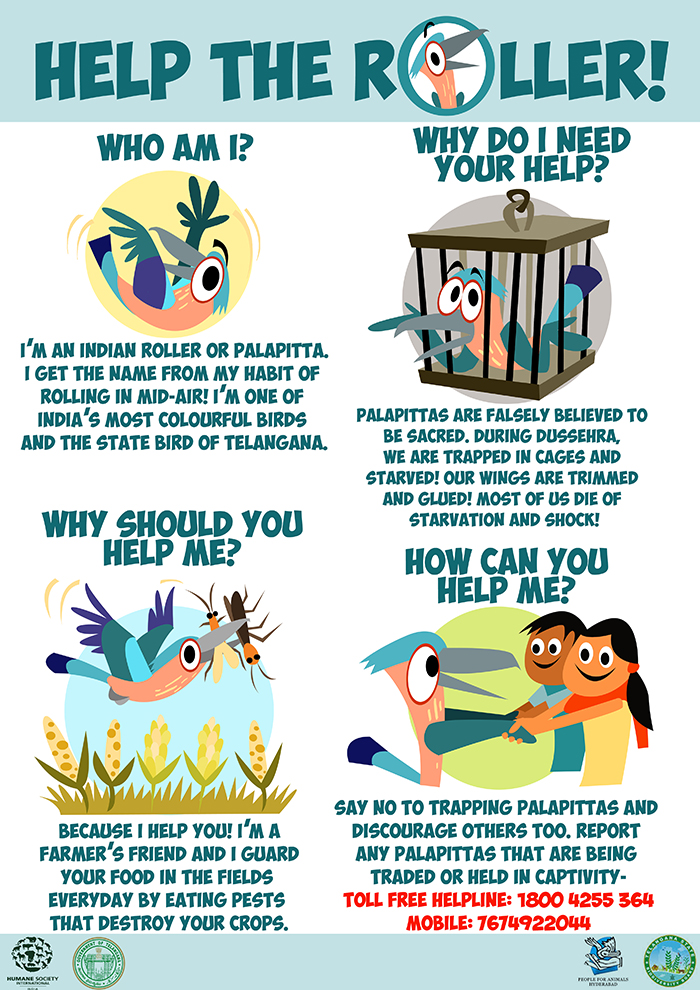Picture this: a large brown and blue bird, appearing to almost crouch on an exposed branch. From its vantage point, it gazes intently at the ground below. A movement in the grass… an insect emerges… and the bird dives into action. As it takes flight, it is not just brown and blue anymore. Colours seem to explode on its wings — azure, turquoise, cyan, blue, purple and black. It’s a mesmerising display. After snatching up the insect, it flies back to the exact earlier spot to feed. Later, it continues its scan of the ground, motionless.
You’ve just met the Indian Roller.
Where does it get its name?
Rollers are excellent fliers and get their name from their elaborate courtship display, which involves flying high up into the sky and tumbling down in what can only be described as an acrobatic manoeuvre. They do all of this to impress a female. Their loud and harsh ‘chack-chack’ calls supplement the action and the frenzied flapping of their wings shows off their vivid colours.
Where is it found?
A widespread resident of India, the Indian Roller (Coracias benghalensis) is also found in many other parts of south Asia. It is the state bird of four states in India: Karnataka, Orissa, Telangana and Andhra Pradesh. A cousin of the Indian Roller, the Eurasian Roller (Coracias garrulus), with its predominantly blue garb, is a passage migrant and visits India briefly in the winter.
The bird is usually found in lowland regions (below 1,200 metres), and prefers open, cultivated areas or light, deciduous forests. You can also see it in cities, in parks and on electrical cables. So keep an eye out for those dazzling colours.
What does it eat?
The Indian Roller preys largely on insects, and seems to prefer beetles, crickets, and grasshoppers; though it seems quite happy with wasps, flies, moths, butterflies and, where available, amphibians too. It’s not too fussy about what it eats, clearly.
Is it under threat?
Yes. A month before Dusshera, poachers set traps for the Indian Roller. They catch these colourful birds using trapping poles, clip and glue their wings so they cannot fly away. Then they cage the poor birds and tie them up with wire so they can’t even move. And they don’t even feed the birds or give them water at all. All this, just to display and sell these birds as they are believed to bring good luck. Well, not to the birds, that’s for sure. It is so silly to believe that harming one life can bring luck to another, isn’t it?
Many birds die of exhaustion and starvation.
This is very sad, not to mention strictly illegal. To display or sell them would cause a penalty of ₹25,000 or imprisonment of up to three years or both under the Schedule IV of the Wildlife (Protection) Act, 1972.
If you see any illegal activity, help this bird, and call Humane Society International/India's tip line: 7674922044.
For more, read the full story here.
Other stories from the Guest Editor edit meet:

